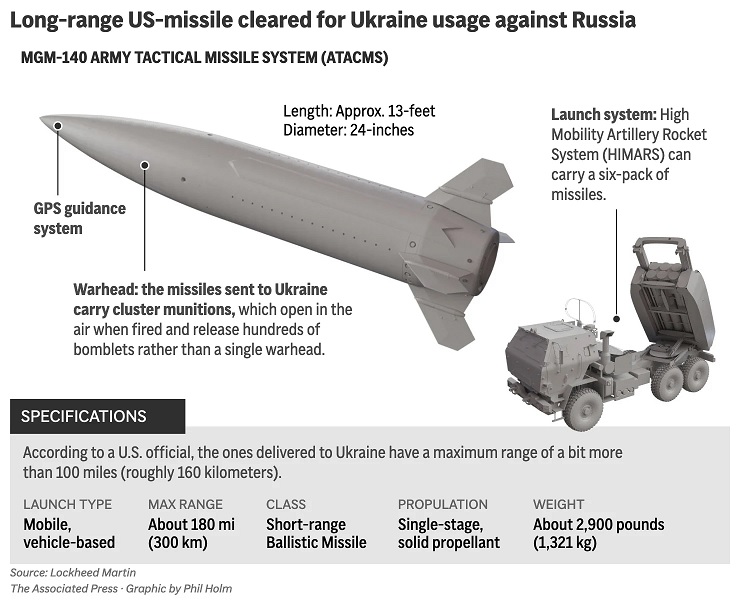Nuclear Doctrine Updates Heighten Global Tensions
Ukraine Strikes with U.S. ATACMS Missiles
Ukraine reportedly used U.S.-made ATACMS missiles to target a Russian military facility in the Bryansk region. According to Russia’s Ministry of Defense, six missiles were launched, five of which were intercepted. Despite the limited physical damage, the attack marked a significant escalation, drawing attention to the U.S. role in arming Ukraine. Kyiv has not officially commented on the strike, although Ukrainian sources confirmed the operation.
Russian Foreign Minister Sergey Lavrov accused the U.S. of encouraging escalation, emphasizing that such attacks would be impossible without American support. This strike underscores the growing use of advanced Western weapons in the conflict.
Russia Updates Its Nuclear Doctrine
In response to the Bryansk attack, Russian President Vladimir Putin approved updates to the country’s nuclear doctrine. The revisions expand the conditions under which nuclear weapons might be used. Russia now considers aggression by a non-nuclear state, supported by a nuclear power, as grounds for a nuclear response.
The Kremlin stated that any ballistic missile launch targeting Russia or Belarus could provoke a nuclear response. Press Secretary Dmitry Peskov reiterated this stance, framing it as a defensive measure against external threats.

Analysts Debate Russia’s Intentions
Experts are divided on whether Russia’s nuclear rhetoric represents a genuine threat or strategic posturing. Some believe Moscow aims to pressure the West into limiting Ukraine’s military capabilities. Others view the statements as a bluff, citing Russia’s reluctance to directly confront NATO.
Timothy Ash, an emerging markets strategist, dismissed the threats as saber-rattling. He argued that Russia fears a direct conflict with NATO, which could lead to a swift defeat. Instead, Russia may escalate through asymmetric warfare, such as targeting European infrastructure.
Preparations for Nuclear Conflict
While skepticism persists, Russia’s actions suggest it is preparing for potential escalation. The country has begun mass-producing mobile bomb shelters designed to protect civilians from nuclear and conventional threats. These units, capable of shielding 54 people for 48 hours, highlight Russia’s effort to display readiness to its population.
Although the timing aligns with the missile strike and nuclear doctrine update, officials have not explicitly connected these developments. Analysts view the move as another signal to the West that Russia takes its warnings seriously.
The use of U.S.-made ATACMS missiles by Ukraine has amplified tensions with Russia. Moscow’s updated nuclear doctrine and public displays of preparedness underline the stakes of the conflict. However, whether Russia is truly ready to escalate to nuclear warfare or merely leveraging threats as a bargaining tool remains uncertain. Global powers must navigate this volatile situation cautiously to prevent catastrophic consequences.
Our Visitor






 Users Today : 39
Users Today : 39





